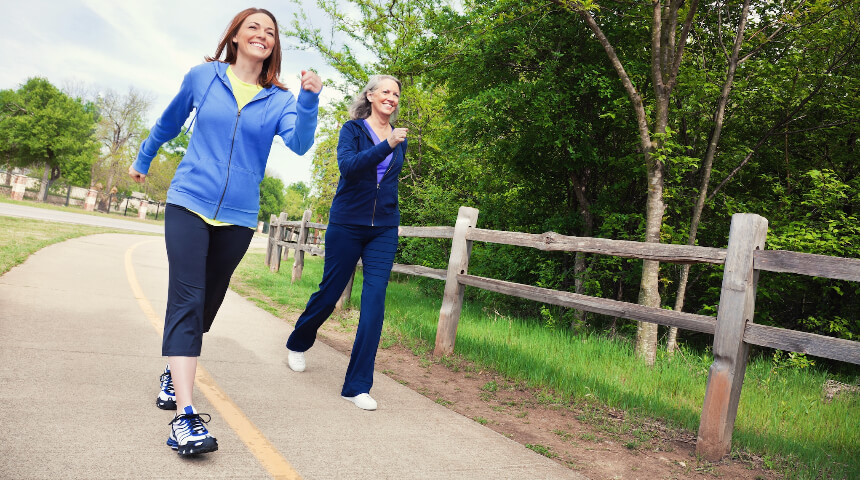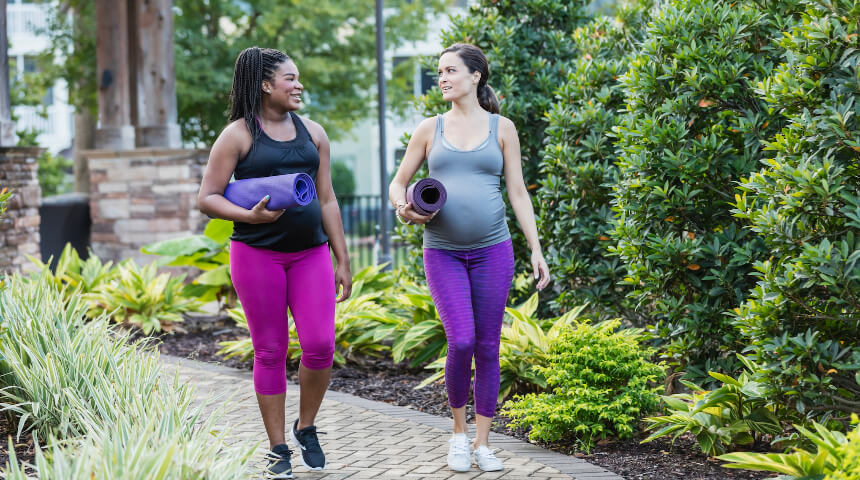We all know exercise is good for us — that is, unless we overdo it and end up with a sprained ankle, pulled muscle or other injury. Warming up is the best way to get your body ready for exercise. Understanding how and when to warm up can help you get the most out of your workout while minimizing injuries.
Warmups Aren’t Just for Muscles
Warming up before exercise is about much more than just loosening tight muscles. It actually revs up your cardiovascular system, gradually getting it ready to work harder. It does this by:
-
Dilating your blood vessels, which allows more blood to flow throughout your body and ensures your muscles have the oxygen they need to perform
-
Raising your body temperature for optimal muscle flexibility and breathing efficiency
-
Slowly increasing your pulse, which minimizes stress on your heart and lungs
If you start exercising at full intensity without a warmup period, your heart and lungs are suddenly forced to work very hard. This can put unnecessary stress on your cardiovascular and respiratory systems. By slowly and steadily increasing your heart’s output of oxygen-rich blood to your lungs and muscles, you’re safely giving your body the fuel it needs for exertion while lowering the possibility of injury.
Injury is More Likely Without Warming Up
Many injuries that occur when exercising without warming up happen in the muscles. When you start your workout without raising your body temperature and heart rate first, you’re more likely to experience muscle strain — especially in your hamstrings, calves and quads.
If your muscles haven’t warmed up or received the blood they need to perform well, they might not be as flexible or strong as they should be. Warmups help us perform better when we’re ready for activity and exercise.
Warming up also helps loosen and lubricate your joints, so you may be less likely to feel stiff and achy after working out. This is particularly true for people with arthritis or other chronic joint problems.
Tried and True Warmup Exercises
To avoid muscle strain and other injuries, focus on warming up large muscle groups (such as your hamstrings, quadriceps and glutes) as well as smaller leg muscles, such as your calves. If you’re getting ready for an upper body workout like rowing, you’ll also want to warm up your arms, biceps, shoulders and upper back.
While the best way to warm up depends on the type of exercise you’re preparing to do, here are ways to get your blood pumping and mobilize your muscles:
● Gentle jogging (outdoors, on a treadmill or in place)
● Dynamic stretching, which is a movement-based type of warmup that includes arm circles, walking lunges and upper body twists
No matter which type of warmup you choose, aim for 15 to 20 minutes of gradually increasing intensity. And if you have questions or concerns about how to warm up and work out safely, don’t hesitate to check with your healthcare provider.
Choose to Stay in Touch
Sign up to receive the latest health news and trends, wellness & prevention tips, and much more from Orlando Health.
Sign Up










